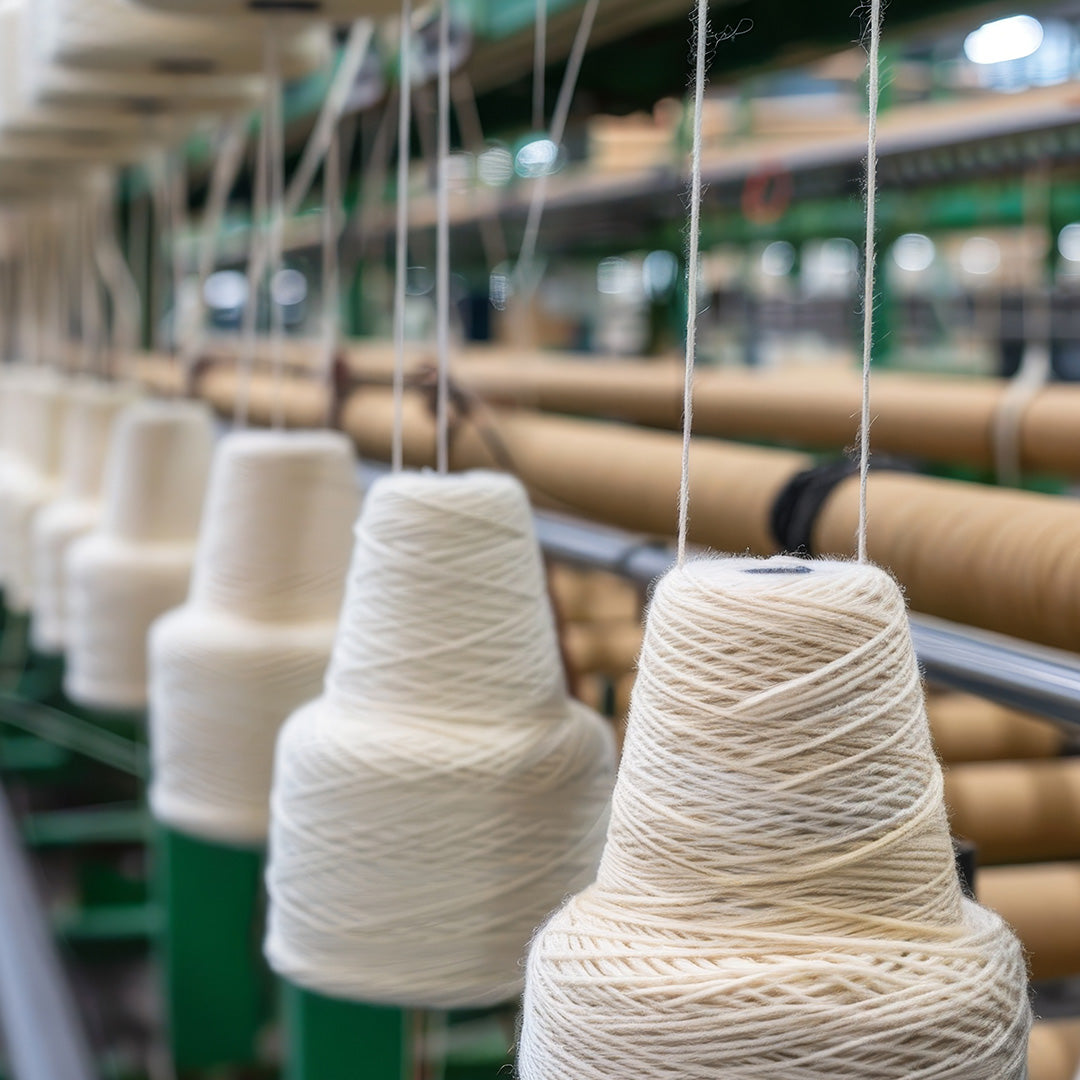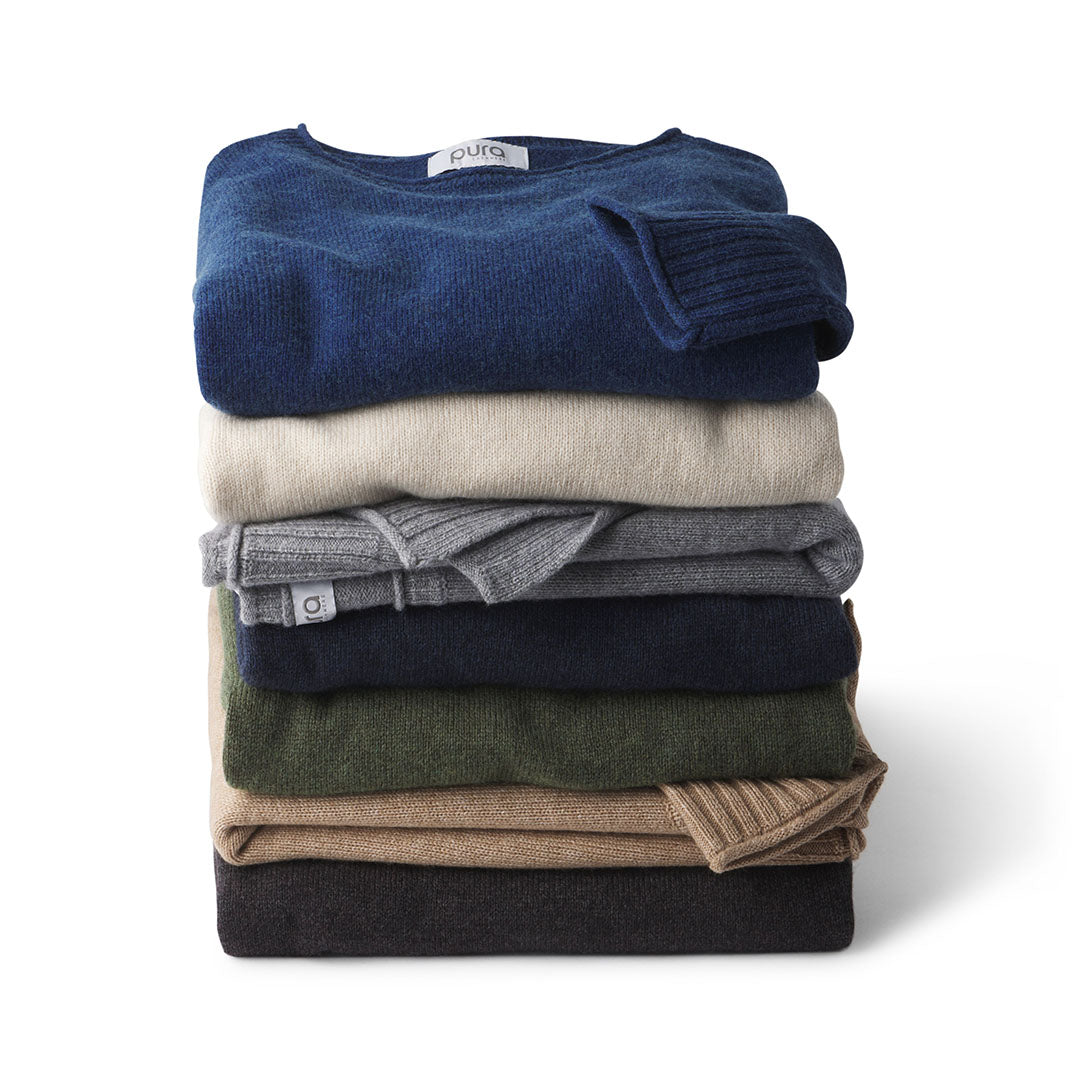Sustainability at Pura Cashmere
We design from the body outward—balancing proportion, seam placement, and structure—then choose fibers that perform over years of wear: exceptional cashmere, American-grown SUPIMA™ cottons, washed linens, and thoughtful blends. We produce in considered runs, prioritize low-impact processes and minimal packaging, and use recycled or lower-impact synthetics only when they meaningfully improve durability and shape retention. The result: modern layers you’ll reach for again and again.
Our Practices
How We Make & Move

Thoughtful Processes
From yarn to finishing, we focus on methods that minimize waste and conserve resources. Fully fashioned knits reduce cutting waste; for wovens, we use efficient patterning and tight markers. Responsible dyeing and careful quality checks help us keep what matters—handfeel, colorfastness, and durability—while cutting what doesn’t.
Smarter Packaging
Orders leave our studio in minimal, recyclable materials, with protective storage bags designed to be reused season after season. We continue to phase down unnecessary inserts and explore lower-impact options where protection and presentation still meet our standards.
Lean Logistics
We forecast and ship in considered runs, consolidate where possible, and continually review routes and modes to reduce unnecessary transport. The goal is simple: deliver efficiently, protect the product, and keep our footprint—and excess—low.

Goals & Progress
Practical Commitments we are tracking
We focus on improvements that matter over time and report on them annually.
Materials. We’re expanding the share of styles made with SUPIMA™ across our cotton program—prioritizing extra-long-staple quality for strength, softness, and longevity.
Production & Inventory. Smarter forecasting and smaller, more frequent production runs help us reduce excess inventory and overproduction while keeping quality high.
Packaging. We’re phasing down virgin poly in protective packaging where feasible, testing recycled and lower-impact options without compromising product protection.
Traceability. We’re deepening yarn-to-garment visibility with key partners and improving documentation so customers can better understand how pieces are made.
Transport. We keep air freight to a minimum and consolidate shipments where possible, choosing lower-impact modes when timelines allow.
We’ll publish a brief update on this page each year summarizing progress and next steps.
Updated: August 2025
Sustainability FAQ
Each knit panel is shaped on the machine and linked together, which minimizes cutting waste and improves fit.
Thoughtful blends can improve durability, handfeel, or shape retention—extending the life of the garment. We never blend as a shortcut.
It’s American-grown extra-long-staple cotton known for strength and softness—chosen to last season after season. It also has to be tested and certified to carry the label. Learn more on our Cashmere & Fiber 101 page
We work with dye houses that follow responsible chemistry and water-management practices and test for colorfastness without compromising handfeel.
Sparingly and purposefully. When they meaningfully improve durability or recovery, we prioritize recycled or lower-impact options.
Wash less, reshape and air-dry flat, and store in breathable bags. For step-by-step care by fabric, see Care & Storage.
